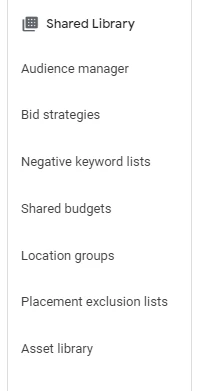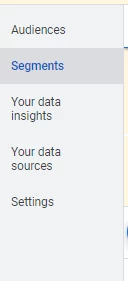
Mastering Google Customer Match Lists

by Lucy Greenaway
How To Upload Customer Match Lists To Google Ads
In the vast and ever-changing landscape of digital marketing, the ability to reach the right audience at the right time has become crucial for businesses seeking to maximise their advertising efforts. Older advertising strategies have been replaced by a more refined approach that focuses on delivering personalised experiences to potential customers.
This is where targeted campaigns come into play.
Targeted campaigns allow marketers to tailor their messages and services to specific segments of their audience, ensuring ad viewability and that the ads resonate with the right people thus generating higher engagement and conversion rates. By leveraging data and insights, businesses can optimise their marketing strategies, drive relevant website traffic, and maximise their return on investment (ROI). However, achieving the level of precision required for successful targeting can be a daunting task - without the right tools and strategies that is.
Enter Google Customer Match Lists - a powerful tool provided by digital marketing giant, Google.
Customer Match Lists offer a game-changing solution for businesses looking to take their targeted campaigns to the next level. The feature allows advertisers to create custom audience segments based on their own customer data, such as email addresses, physical addresses, and phone numbers. By uploading this data to Google Ads, businesses can reach their existing customers and prospects across various Google platforms, including Search, Display, YouTube, and Gmail.
Customer Match Lists act as a bridge between a business's offline customer data and the vast system that Google provides. This means that businesses can leverage their valuable customer insights to deliver tailored ads to the right individuals, which in turn will maximise the effectiveness of their campaigns. Whether it's reconnecting with previous customers, nurturing leads through the sales funnel, or upselling and cross-selling to existing customers, Customer Match Lists empower businesses to connect with their audience on a deeper level.
Understanding Google Customer Match

You might be wondering, what exactly is Google Customer Match and how does it work? Well, imagine having the ability to tailor your ads to your existing customers, ensuring that your message lands directly in the hands of those who are most likely to convert. With Google Customer Match, this dream becomes a reality.
How Customer Match works: Matching customer data with Google user data
The magic of Google Customer Match lies within its ability to match customer data provided by advertisers with Google's vast user data. When advertisers upload customer data, such as email addresses, physical addresses, or phone numbers, Google uses sophisticated algorithms to match data with its user database.
Google's matching process is designed with privacy and security in mind. The customer data is hashed and encrypted before being sent to Google, ensuring that the personal information of customers remains protected.
Overview of the types of customer data that can be used
Google Customer Match allows advertisers to use various types of customer data to create their custom audiences. These include:
Email Addresses
By uploading a list of customer email addresses, advertisers can target specific individuals who have provided their email addresses in the past. This type of data is particularly useful for remarketing campaigns and nurturing existing customer relationships.
Physical Addresses
Physical addresses can be utilised to reach customers through direct mail or target individuals in specific geographical locations. This is especially valuable for businesses with a local or regional focus.
Phone Numbers
Phone numbers provide an additional avenue for reaching customers through SMS or call-based campaigns. This type of data is effective for businesses that have permission to contact customers via phone.
Advantages of using Google Customer Match over other advertising platforms
There are several advantages when businesses choose to use Customer Match in their campaigns.
Precise Targeting
With Google Ads Customer Match, advertisers can target their ads specifically to existing customers, ensuring that the message reaches the most relevant audience. This level of precision can increase the chances of engagement and conversion.
Cross-Platform Reach
A Customer Match feature is that it allows businesses to reach their customers across various Google platforms - including Search Network (via Search Ads), Shopping (via ads in the Shopping tab), Gmail, YouTube, or the Google Display Network using online and offline data. This comprehensive reach ensures that the ads are being seen by customers regardless of where they are in their online sessions.
Personalisation and Customisation
By leveraging customer data, Customer Match lets advertisers tailor their ads to the specific interests and preferences of their customers. This customisation enhances the ad relevancy which is proven to lead to higher engagement levels and better results.
Cost-Effectiveness
Google Customer Match can be a cost-effective advertising solution as it provides the ability to target Customer Match audiences who are more likely to convert. By focusing on existing customers, businesses (especially E-Commerce businesses) can optimise their ad spend and achieve a higher Return On Ad Spend (ROAS).
Building a Customer Match List
Now let's get down to how to actually build a customer match list. The creation of the Customer Match List is a fundamental step in leveraging the power of targeted advertising.
Step-by-step guide on how to create a Customer Match List in Google Ads
STEP 1

Log into your Google Ads account and click on the "Tools and Settings" icon at the top of the right corner of the screen. From the dropdown menu, select "Shared Library".
STEP 2

Under the Shared Library section, choose "Audience Manager."
STEP 3

In the Audience Manager, select "Segments" from the left-hand menu.
STEP 4

Click on the blue "+" button to create a new audience segment, then choose "Customer List".
STEP 5

Give your Customer Match List a descriptive name that reflects its purpose. For example, if you're targeting customers who have made a recent purchase, you can name it "Recent Buyers".
STEP 6
Now, it's time to upload your customer data. Google Ads allows you to use email addresses, physical addresses (mailing addresses), and phone numbers for creating your Customer Match List. Select the type of data that you want to upload, and prepare it accordingly.
STEP 7
Upload the customer data file in CSV format. Make sure the file is properly formatted and includes the necessary contact information. Google Ads provides guidelines on file formatting for a seamless upload process.
STEP 8
Check the box confirming that the data was collected and shared with Google in compliance with their policies.
STEP 9
Choose the membership duration for your list. This essentially determines how long a user will stay in your Customer Match audience segment after their data is matched. Consider your campaign objectives and the frequency at which you update your customer data when setting your membership duration.
STEP 10
Finally, click on "Upload and Create" to create and upload your Customer Match List. It may take up to 48 hours for the list to be processed and ready for use in your campaigns.
Best practices for uploading customer data and ensuring data privacy and compliance
When uploading customer data to build a Customer Match List in a Google Ads Campaign, it is important that you follow best practices to protect user privacy and comply with data regulations.
You need to ensure that you have obtained consent from your customers to use their data for targeted advertising purposes. This is absolutely crucial for maintaining their trust and compliance with data privacy laws.
You also need to properly safeguard customer data and prioritise data security by using encryption methods to protect customer information during storage and transmission. Implement security measures to prevent unauthorised access to data.
Regularly updating and cleaning the data will help you keep the Customer Match List up to date. This will ensure that the targeting remains effective - You don't want to be using outdated or inaccurate customer data!
It is paramount that you comply with data protection regulations and familiarise yourself with General Data Protection Regulation laws (GDPR), and ensure that your data collection and usage practices align with these regulations.
Tips for optimising Customer Match Lists for better targeting

Create different Customer Match Lists based on specific customer attributes, behaviours, or interests. This allows for more precise targeting and tailored messaging in your campaigns. An example would be creating separate lists for recent buyers, high-value customers, or newsletter subscribers.
Explore combining Customer Match Lists with other targeting options, like demographic targeting or remarketing lists. This type of layered approach can further enhance the accuracy and effectiveness of your campaigns.
The Google Ads Audience Insights tool can be leveraged to gain valuable insights into your Customer Match Lists. This feature can help you gain more information on your audience's demographics, interests, and behaviour which will help you to refine your targeting strategies.
You should also be continuously testing different variations of your ads. This includes ad text, messaging, visuals, and call-to-actions to determine what resonates best with your audience. Use and analyse the performance metrics and make data-driven adjustments to optimise your campaigns for better results.
It is also a good idea to make use of the audience exclusions feature in Google Ads. When targeting your Customer Match Lists it is important that you exclude certain audiences that you do not want to target.
Leveraging Customer Match Lists in Campaigns

With it being one of the most powerful tools in Google's retargeting arsenal, it is important to know how you can leverage Customer Match Lists to work for your Google Ads Campaigns to take them to the next level and achieve impressive results.
Using Customer Match to move prospects down the sales funnel
The sales funnel is a crucial concept in marketing, with it representing the journey that potential customers take from the initial awareness of a business or brand to the final purchase or conversion action. With Google Ads' Customer Match, marketers can create customised audiences based on specific segments of their prospects, allowing them to tailor their ads and messaging to each stage of the funnel.
Example
Let's take the example of a sports equipment company that wants to move potential customers from the awareness stage to the consideration stage. By uploading a customer match list of individuals who have signed up for a newsletter or downloaded a workout guide they can target these individuals with ads designed to pique their interest.
Targeting mid and low-funnel prospects for higher conversion rates
While mid and low-funnel prospects already show a higher level of intent, converting them into paying customers can still be a challenge. This is where Customer Match can make a significant impact. By targeting these prospects with tailored ads and offers, businesses can overcome any barriers or objections that may be preventing them from making a purchase.
Example
A travel agency that wants to convert individuals who have visited their website, and searched for vacation destinations, but haven't completed a booking. By creating a Customer Match List based on these individuals' behaviour, the agency can deliver personalised ads that showcase exclusive travel packages or limited-time discounts, enticing them to make a booking and secure their dream vacation.
Upselling and cross-selling to existing customers with Customer Match
Existing customers are a valuable asset for any business, and Customer Match can be a game-changer when it comes to upselling and cross-selling efforts. By uploading a Customer Match List of their current customer base, businesses can create targeted ads that promote complementary products or services, encouraging repeat purchases and increasing average customer value.
Example
Let's say an online clothing retailer wants to upsell to customers who have previously purchased winter coats. Using Customer Match, they can create an audience segment specifically for these customers and show ads highlighting new arrivals in winter accessories like scarves, hats, and gloves. This personalised approach increases the chances of attracting their attention and driving additional sales.
How Google Uses Customer Match Data

When it comes to Google Customer Match, the way Google manages and utilises customer data plays a crucial role in the effectiveness of targeted campaigns. In this section, we will explore how Google handles customer match data, their data management practices, and the channels where Customer Match data can be utilised.
Google's data management practices and privacy policies
Google is committed to protecting user privacy and maintaining the security of customer data. They have stringent data management practices in place to ensure the responsible use and handling of personal information.
Google's privacy policies adhere to strict regulations and guidelines, ensuring that customer data is handled with the utmost care. They implement robust security measures to safeguard against unauthorised access, data breaches, and misuse of personal information. This commitment to data privacy enables businesses to confidently leverage Google Customer Match for targeted campaigns.
How Google matches customer data with user data
Google uses advanced algorithms and machine learning techniques to match customer data with user data within its advertising platforms. When businesses upload customer email addresses, physical addresses, or phone numbers, Google matches this data with the corresponding Google user accounts.
The matching process is designed to protect user privacy and maintain the anonymity of individual customers. Google employs hashing techniques, which convert customer data into encrypted, non-identifiable values before the matching process. This ensures that personal information remains secure and inaccessible to advertisers or any third parties.
The reach and channels where Customer Match data can be used (Search, Shopping, Gmail, YouTube, Display)
Google Customer Match offers a wide range of channels where businesses can leverage their customer data for targeted campaigns. These channels include Search, Shopping, Gmail, YouTube, and Display.
Search
With Customer Match, businesses can create highly targeted search campaigns that specifically target their existing customers. By matching customer data with Google user accounts, ads can be tailored to reach customers when they actively search for related products or services.
Shopping
Customer Match allows businesses to customise their shopping campaigns and target ads to their existing customers. This provides a valuable opportunity to showcase relevant products and drive conversions among customers who have already shown an interest in the brand.
Gmail
Through Customer Match, businesses can reach their existing customers with personalised ads directly in their Gmail inboxes. This channel offers a highly engaging and intimate platform for delivering targeted messages and driving customer engagement.
YouTube
YouTube is a powerful platform for reaching a vast audience, and with Customer Match, businesses can serve personalised video ads to their existing customers. By utilising customer data, businesses can deliver relevant content to their customers and increase brand visibility on this popular video-sharing platform.
Display
Customer Match can be utilised within the Google Display Network, allowing businesses to display personalised ads to their existing customers across a vast network of websites and apps. This extensive reach provides ample opportunities to engage with customers at various touchpoints in their online journey.
Compliance and Policy Considerations

When using Google Customer Match Lists, it is crucial to familiarise yourself with the guidelines and requirements set forth by Google to ensure that your campaigns are in line with their policies. Let's dive into the key considerations for compliance and policy adherence when leveraging Customer Match Lists for targeted campaign success.
Google Customer Match policy guidelines and requirements
Google has specific policies in place to protect user privacy and maintain the integrity of its advertising platform. Adhering to these policies not only ensures a positive user experience but also helps to establish trust with your audience. Here are some key policy guidelines and requirements to keep in mind:
Data Collection Consent
When collecting customer data for use in Customer Match Lists, it is crucial to obtain proper consent from your customers. Ensure that you have clear and transparent processes in place for obtaining consent and explain how the data will be used in your privacy policy.
Sensitive Information
Google prohibits the use of Customer Match Lists for targeting ads related to sensitive information, such as personal health conditions, financial status, or religious beliefs. Make sure your campaigns adhere to these restrictions to avoid policy violations.
Age Restrictions
It is important to note that Customer Match Lists cannot be created using customer data for individuals under the age of 13. Ensure that you are only using data from individuals who meet the age requirements set by Google.
Ensuring compliance with data collection and usage policies
It is imperative that your business complies with data collection and usage policies.
Data Security Measures
You should implement robust security measures to safeguard customer data and protect it from unauthorised access or misuse. You should use systems that are designed to meet industry standards for data security and encryption.
Transparent Privacy Policies
You need to provide clear and concise privacy policies that outline how customer data is collected, stored, and used.
Regular Compliance Audits
You should conduct regular audits to ensure that your data collection and usage practices align with Google's policies. By staying up to date with any policy changes or updates, you can quickly adapt our strategies to remain compliant.
Consequences of policy violations and the appeals process
Failure to comply with Google's policies can result in severe consequences for your advertising account. These consequences may include suspension of your Google Ads account or the inability to use certain features, such as Customer Match Lists. Therefore, it is essential to adhere to the policies and guidelines outlined by Google.
In the event of a policy violation, Google will notify you of the violation and provide an opportunity to make the necessary corrections. It is crucial to address the issue promptly and take corrective action to rectify any policy violations. Failure to do so may result in further penalties or account suspension.
If you believe that a policy violation has been mistakenly identified or you have made the necessary corrections, you can appeal the decision to Google. However, repeated or egregious policy violations may lead to immediate account suspension, making it essential to prioritise compliance and adhere to Google's policies at all times.